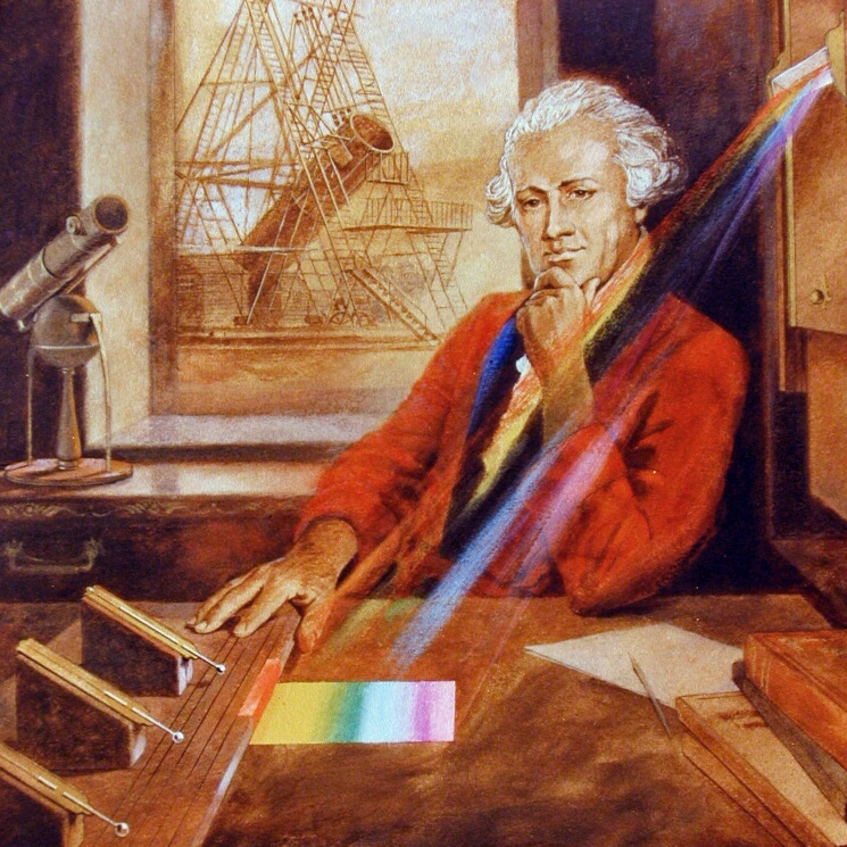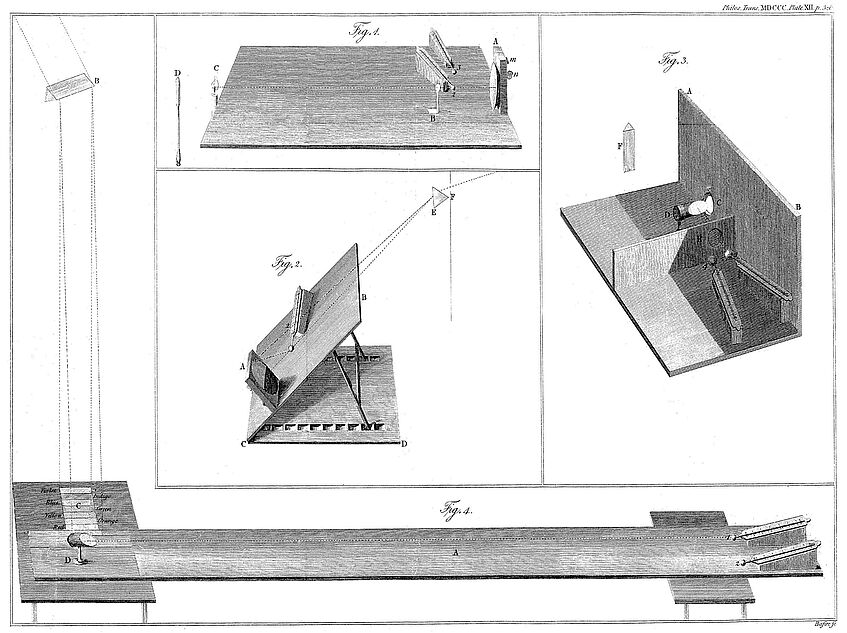Back then
The experiment of William Herschel in the year 1800

The experiment of William Herschel in the year 1800
The original experimental setup for the discovery of the infrared radiation is relatively simple. Sunlight falls through a window and moves through a prism, which breaks up white sunlight into its spectral colours. The prism therefore produces a small "rainbow", which is called spectrum. Within this spectrum, William Herschel was able to measure the temperatures of the different spectral colours with multiple thermometers (with blackened tips to improve the absorption of the solar radiation).
Through this, he found out that the temperature continuously increases from the blue to the red region of the spectrum. This phenomenon is linked to the spectral energy density of the solar radiation in the different colours and the diffraction in the prism.
Surprisingly, William Herschel discovered that the highest temperature can be measured in the area behind the red part of the spectrum, which is dark to our eyes. The fact that there must be an invisible kind of radiation, which is also diffracted by the prism, was a significant and sensational discovery. Today we are aware that this so-called infrared radiation or thermal radiation is emitted by all objects and living beings, which have a certain temperature.

Drawings of the different experiments of the original publication by William Herschel (https://www.jstor.org/stable/107058)
